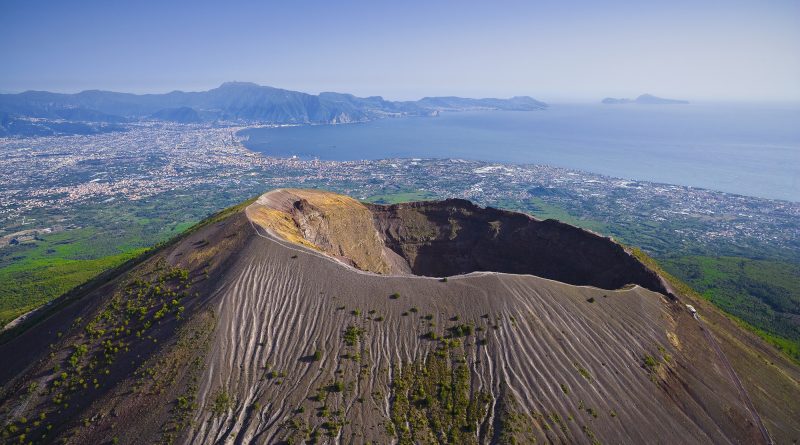Volcano Vesuvius
Italy’s most dangerous and famous natural attraction is Vesuvius. It is considered the only active volcano of its kind in continental Europe and the third largest source of ash and lava in Italy. The volcano is located about 15 km from the coastal city of Naples. Although Vesuvius is periodically remembered and terrifies the local population, it is the most studied and visited volcano on the planet.
About 25,000 years ago, Vesuvius was replaced by a large basin, shaped like a circus ring. It was destroyed by numerous eruptions, and Vesuvius erupted in its place. It is not known exactly when the first eruption took place, but it is known that there was a second major eruption about 3,800 years ago.
Europe’s most dangerous volcano
Of the dozens of major eruptions of Vesuvius, the most tragic occurred on 24 August 1979, when Pompeii and other cities of ancient Rome were destroyed. This drama was described by ancient Roman authors on numerous occasions, but for a long time it was considered only a legend. Only in the mid-18th century were the legendary facts confirmed by archaeological excavations.
What are the characteristics of Mount Vesuvius today?
Today, Vesuvius is considered by experts to be a very dangerous volcano, with almost 3 million people living dangerously close to it. Try to locate the Vesuvius volcano on a map. Did you notice a very important detail? The adjacent area is by far the most densely populated volcanic area in the world. In 1944 the local population was alarmed by huge ash clouds rising from the volcano’s crater, caused by landslides in the crater.
Scientists now warn that Vesuvius is becoming increasingly dangerous. Seismic studies show that there is a layer with unusual properties beneath this mountain at a depth of 10 km. Researchers believe it is likely that active magma has escaped at this level. Therefore, the population should be prepared for an emergency evacuation in case of a sudden volcanic eruption.
Modern tourists can visit Vesuvius and see the surroundings of the volcano, and even be in the immediate vicinity of the crater. To tour the national park you have to get to Naples. Then be patient, as it is a city that tends to spend a lot of time in traffic jams.
The more determined and patient, of course, have the opportunity to visit the famous park and, above all, the volcano Vesuvius, whose photo will become a worthy addition to your photo album later on. Entrance to the site is not free and the ticket costs 8 euros.
The path up to the volcano’s crater is a dusty serpentine. If you look back, you can get a good view of Naples and the Bay of Naples below. The climb up the mountain is challenging and in some places benches have been set up for tourists to sit and relax. Souvenirs to remind you of your visit to Vesuvius can be bought in the shops along the road.
After the arduous journey, tourists can enjoy an unforgettable view: the mouth of the great volcano. When tourists look at the green plants directly at the inner elephants of the crater they are overwhelmed by strong emotions. It is amazing that life can thrive even in such dangerous places, taking a brief respite from the development of a powerful geological process!
One of the reasons to visit
Today, Vesuvius is recognised as one of the most dangerous volcanoes on the planet. Scientists estimate that it has destroyed neighbouring areas at least 80 times. It is currently one of three active volcanoes in Italy, along with Etna and Stromboli.
At 1,281 metres high, it is second only to Etna, at 3,329 metres above sea level. However, Etna is on the island of Sicily, while Stromboli is in the Lipari Islands. Vesuvius is therefore the largest and only active volcano not only in Italy, but also in continental Europe.
You may also like:

